All you need to know about pasta varieties … our guide
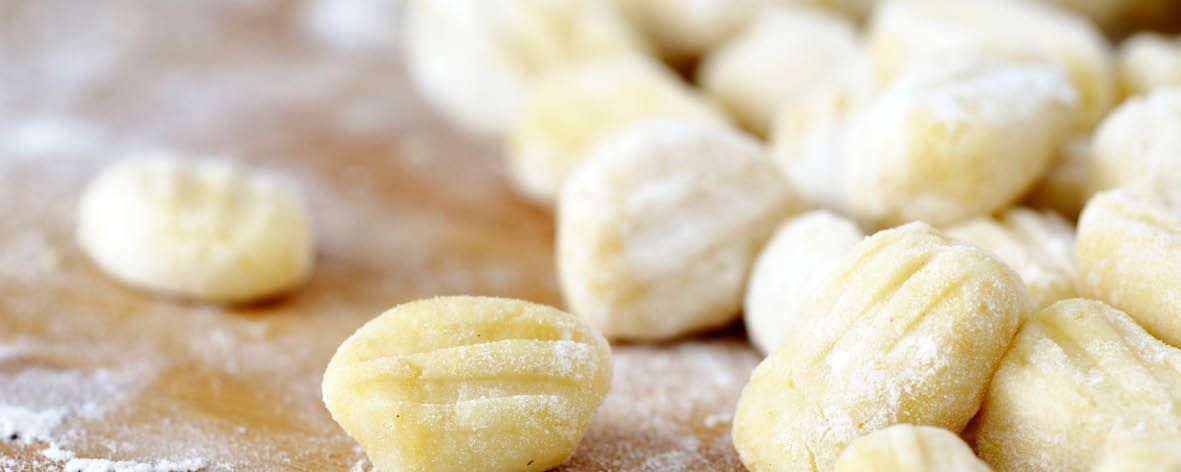
When it comes to pasta it seems that there is an endless variety of shapes, sizes, colours and options available. Sure, most of us know the difference between spaghetti and fettucine, but do you know when to use casarecce? Or what’s the difference between fusilli and rotini? Read on for our guide to pasta varieties.
OK before we begin, a small disclaimer, there are a LOT of different types of pasta so this list is by no means exhaustive, but rather a guide to some of the most popular varieties available.
LONG PASTA
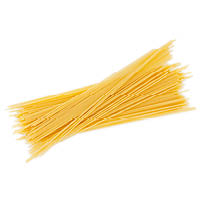 Spaghetti – perhaps the most famous of all pasta varieties, spaghetti is cylinder-shaped and is commonly served with bolognaise sauce, or meatballs. Did you know that spaghetti means “little strings” in Italian.
Spaghetti – perhaps the most famous of all pasta varieties, spaghetti is cylinder-shaped and is commonly served with bolognaise sauce, or meatballs. Did you know that spaghetti means “little strings” in Italian.
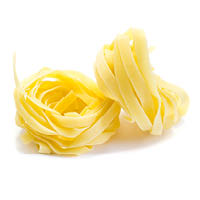 Fettucine – fettucine is similar to spaghetti but it is flat rather than cylinder-shaped. Its width makes it the ideal accompaniment for thick meaty sauces. Its name means “little ribbons”.
Fettucine – fettucine is similar to spaghetti but it is flat rather than cylinder-shaped. Its width makes it the ideal accompaniment for thick meaty sauces. Its name means “little ribbons”.
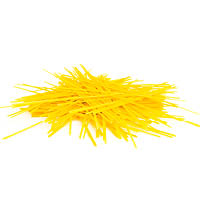 Linguine – wider and fatter than spaghetti, but not as wide a fettucine, linguine is commonly served with seafood. It is also perfect for cream-based or white wine sauces. Its name means “little tongues”.
Linguine – wider and fatter than spaghetti, but not as wide a fettucine, linguine is commonly served with seafood. It is also perfect for cream-based or white wine sauces. Its name means “little tongues”.
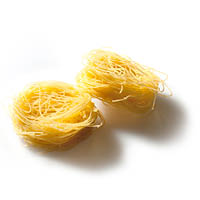 Capellini – also known as “angel hair pasta” its name literally translates to “thin hair”. A very fine form of spaghetti, it works well with simple, light sauces.
Capellini – also known as “angel hair pasta” its name literally translates to “thin hair”. A very fine form of spaghetti, it works well with simple, light sauces.
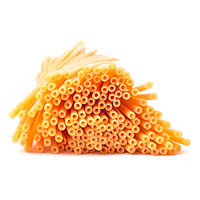 Bucatini – similar to spaghetti, bucatini translates to “hollow straw” which makes sense as it has a hollow centre. The hole is a great trap for extra sauce, making a popular variety to use in casseroles and soups.
Bucatini – similar to spaghetti, bucatini translates to “hollow straw” which makes sense as it has a hollow centre. The hole is a great trap for extra sauce, making a popular variety to use in casseroles and soups.
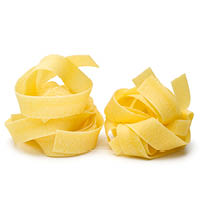 Pappardelle – wider than fettucine, this sturdy pasta is a great carrier of hearty sauces like ragu and bolognaise. Its name comes from the verb ‘pappare’ which means to eat with childish joy and pleasure.
Pappardelle – wider than fettucine, this sturdy pasta is a great carrier of hearty sauces like ragu and bolognaise. Its name comes from the verb ‘pappare’ which means to eat with childish joy and pleasure.
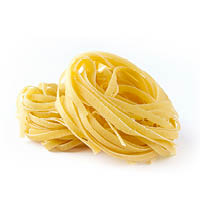 Tagliatelle – similar to fettuccine, tagliatelle is slightly narrower, but it is also great for meaty sauces.
Tagliatelle – similar to fettuccine, tagliatelle is slightly narrower, but it is also great for meaty sauces.
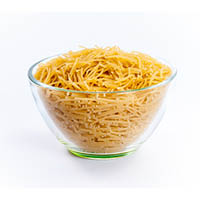 Vermicelli – don’t confuse these with the Asian vermicelli noodles; the pasta variety is made with semolina and is very thin but ideal for light pasta dishes or in soups.
Vermicelli – don’t confuse these with the Asian vermicelli noodles; the pasta variety is made with semolina and is very thin but ideal for light pasta dishes or in soups.
SHORT PASTA
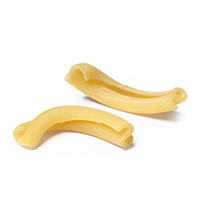 Casarecce – with a name that means “homemade” in Italian, casarecce is a loosely rolled and twisted noodle whose centre is perfect for holding sauce.
Casarecce – with a name that means “homemade” in Italian, casarecce is a loosely rolled and twisted noodle whose centre is perfect for holding sauce.
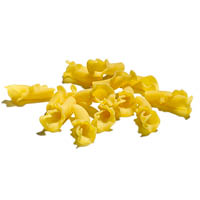 Campanelle – a cone-shaped pasta with a ruffled edge, its hollow centre catches thick sauces well.
Campanelle – a cone-shaped pasta with a ruffled edge, its hollow centre catches thick sauces well.
 Cavatappi – a hollow, spiral shaped pasta with multiple surfaces for coating with sauce. It is often used for pasta salad.
Cavatappi – a hollow, spiral shaped pasta with multiple surfaces for coating with sauce. It is often used for pasta salad.
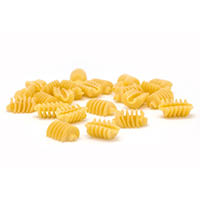 Radiatori – an unusual pasta that is used in soups and casseroles, it has a very unique shape.
Radiatori – an unusual pasta that is used in soups and casseroles, it has a very unique shape.
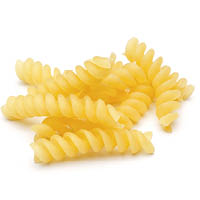 Fusilli – perfect for pasta salads with its tight spirals to hold sauce and dressings.
Fusilli – perfect for pasta salads with its tight spirals to hold sauce and dressings.
 Rotini – very similar to fusilli but with a tighter spiral.
Rotini – very similar to fusilli but with a tighter spiral.
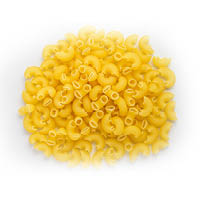 Elbows – fantastic for macaroni and cheese, as well as in casseroles; it’s also often used for craft activities.
Elbows – fantastic for macaroni and cheese, as well as in casseroles; it’s also often used for craft activities.
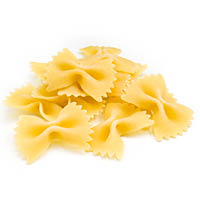 Farfalle – you might know it as “bow tie” pasta, although its name actually means “butterfly”. It is ideal for light sauces, creamy sauces and pasta salads
Farfalle – you might know it as “bow tie” pasta, although its name actually means “butterfly”. It is ideal for light sauces, creamy sauces and pasta salads
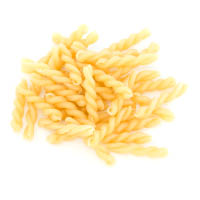 Gemelli – although gemelli looks like two pieces of pasta twisted together, it is actually just one s-shaped piece twisted into a spiral. It is often used in pasta salad but it also collects sauce well so is good for herby sauces.
Gemelli – although gemelli looks like two pieces of pasta twisted together, it is actually just one s-shaped piece twisted into a spiral. It is often used in pasta salad but it also collects sauce well so is good for herby sauces.
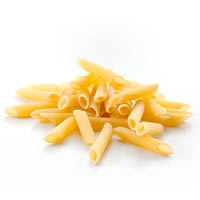 Penne – its named for its pen-like shape and is recognisable for its slanted ends. The ridged surface make it great for catching sauce and it is one of the most popular pasta varieties.
Penne – its named for its pen-like shape and is recognisable for its slanted ends. The ridged surface make it great for catching sauce and it is one of the most popular pasta varieties.
 Rigatoni – very similar to penne, although it does not have the slanted ends. The wide opening in the centre will fill with sauce and the ridges make the perfect spot for cheese to stick to.
Rigatoni – very similar to penne, although it does not have the slanted ends. The wide opening in the centre will fill with sauce and the ridges make the perfect spot for cheese to stick to.
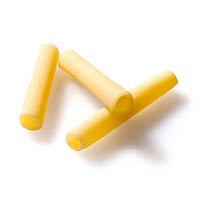 Ziti – another pasta that looks like penne, the difference being that it has straight edges and no ridges. Popular in baked dishes like the well-known Baked Ziti.
Ziti – another pasta that looks like penne, the difference being that it has straight edges and no ridges. Popular in baked dishes like the well-known Baked Ziti.
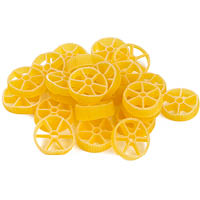 Rotelle – its name means “little wheels” and one look will tell you why. The spokes of the wagon wheel shape are ideal for holding on to finely diced vegetables. Often used in soup, it is a shape that’s popular with children.
Rotelle – its name means “little wheels” and one look will tell you why. The spokes of the wagon wheel shape are ideal for holding on to finely diced vegetables. Often used in soup, it is a shape that’s popular with children.
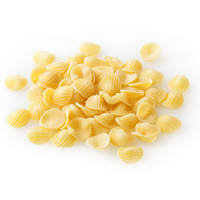 Orecchiette – meaning “little ears” this is indeed a fitting name for this pasta. Cream sauces work well with orecchiette.
Orecchiette – meaning “little ears” this is indeed a fitting name for this pasta. Cream sauces work well with orecchiette.
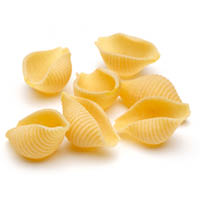 Conchiglie – available in a range of sizes, these shells with their open centres are traps for heavy, meaty or creamy sauces.
Conchiglie – available in a range of sizes, these shells with their open centres are traps for heavy, meaty or creamy sauces.
 Orzo – it might look like rice or a grain of some kind, but this is indeed a type of pasta. Also known as risoni, it is found in minestrone and other soups, as well as used in pilaf.
Orzo – it might look like rice or a grain of some kind, but this is indeed a type of pasta. Also known as risoni, it is found in minestrone and other soups, as well as used in pilaf.
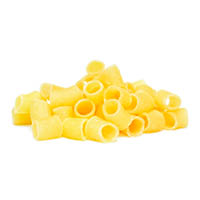 Ditalini – another pasta often used in minestrone soup and pasta e fagioli, ditalini is a small pasta whose name translates to “thimbles”.
Ditalini – another pasta often used in minestrone soup and pasta e fagioli, ditalini is a small pasta whose name translates to “thimbles”.
SHEET PASTA
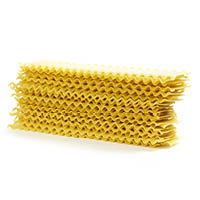 Lasagne – the most common type of sheet pasta is lasagne. With ruffled edges, it is used worldwide for layering into tasty meat and vegetarian based lasagnas.
Lasagne – the most common type of sheet pasta is lasagne. With ruffled edges, it is used worldwide for layering into tasty meat and vegetarian based lasagnas.
FILLED PASTA
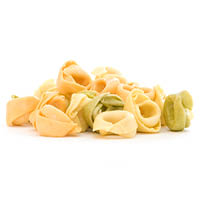 Tortellini – the ring-shaped tortellini holds fillings like meat, vegetables and cheese.
Tortellini – the ring-shaped tortellini holds fillings like meat, vegetables and cheese.
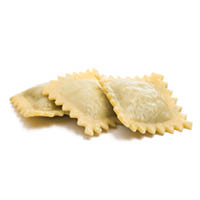 Ravioli – filled with meat, cheese or vegetables, ravioli comes in a range of sizes from small to very large. The edges are usually ruffled.
Ravioli – filled with meat, cheese or vegetables, ravioli comes in a range of sizes from small to very large. The edges are usually ruffled.
 Cannelloni – a large, hollow, tube-shape with no ridges, it is stuffed with meat or cheese.
Cannelloni – a large, hollow, tube-shape with no ridges, it is stuffed with meat or cheese.
 Manicotti – similar to cannelloni but with ridges on the surface.
Manicotti – similar to cannelloni but with ridges on the surface.
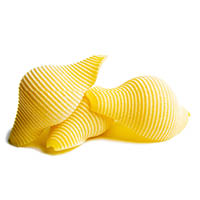 Jumbo shells – usually stuffed with a cheese filling, you can also add herbs and top with a sauce before baking.
Jumbo shells – usually stuffed with a cheese filling, you can also add herbs and top with a sauce before baking.
DUMPLING PASTA
 Gnocchi – made with potatoes, gnocchi are characteristically dumpling-shaped and they are delightful served with a creamy, tomato or herb-based sauce.
Gnocchi – made with potatoes, gnocchi are characteristically dumpling-shaped and they are delightful served with a creamy, tomato or herb-based sauce.

